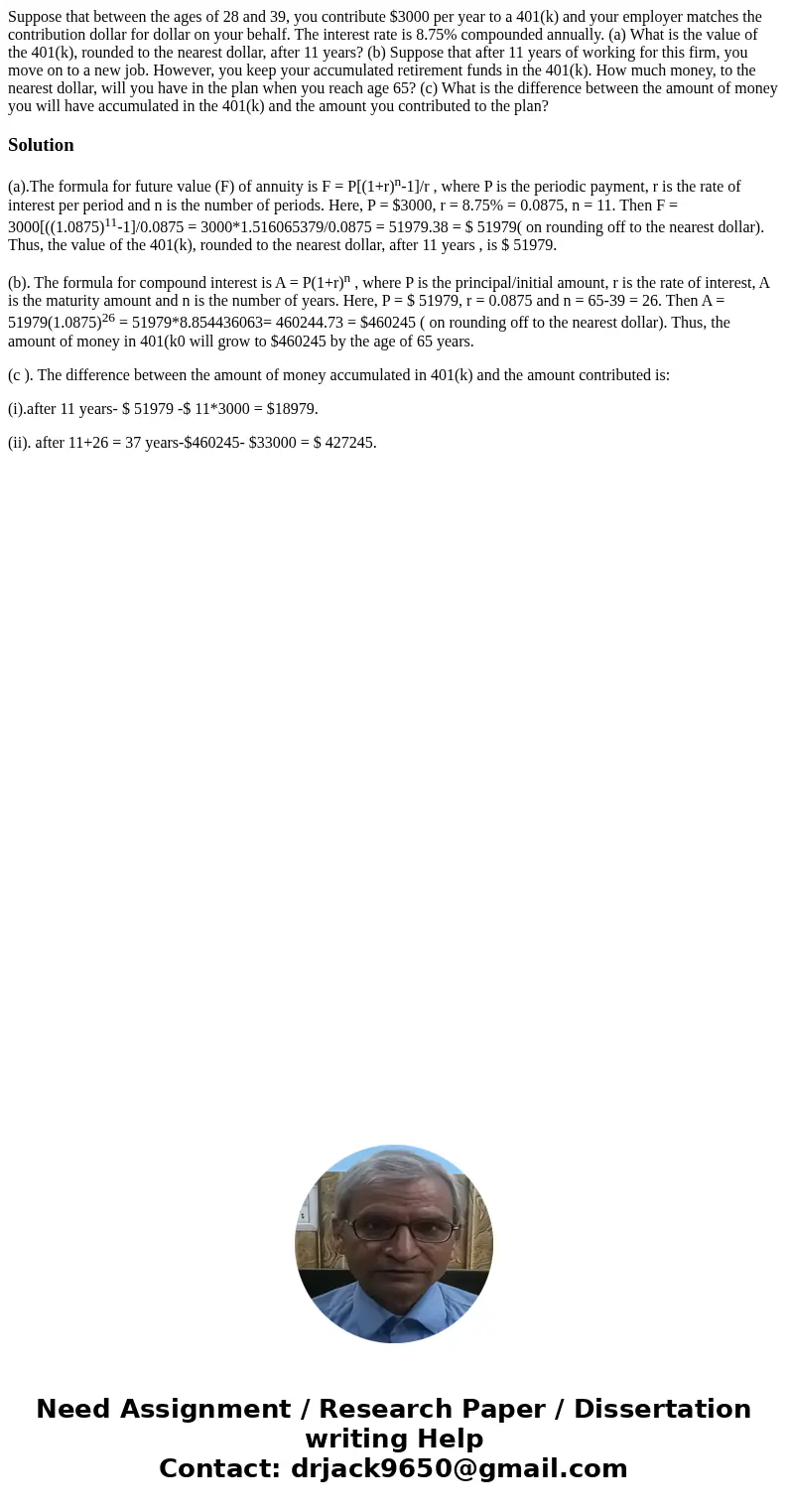Suppose that between the ages of 28 and 39 you contribute 30
Solution
(a).The formula for future value (F) of annuity is F = P[(1+r)n-1]/r , where P is the periodic payment, r is the rate of interest per period and n is the number of periods. Here, P = $3000, r = 8.75% = 0.0875, n = 11. Then F = 3000[((1.0875)11-1]/0.0875 = 3000*1.516065379/0.0875 = 51979.38 = $ 51979( on rounding off to the nearest dollar). Thus, the value of the 401(k), rounded to the nearest dollar, after 11 years , is $ 51979.
(b). The formula for compound interest is A = P(1+r)n , where P is the principal/initial amount, r is the rate of interest, A is the maturity amount and n is the number of years. Here, P = $ 51979, r = 0.0875 and n = 65-39 = 26. Then A = 51979(1.0875)26 = 51979*8.854436063= 460244.73 = $460245 ( on rounding off to the nearest dollar). Thus, the amount of money in 401(k0 will grow to $460245 by the age of 65 years.
(c ). The difference between the amount of money accumulated in 401(k) and the amount contributed is:
(i).after 11 years- $ 51979 -$ 11*3000 = $18979.
(ii). after 11+26 = 37 years-$460245- $33000 = $ 427245.

 Homework Sourse
Homework Sourse